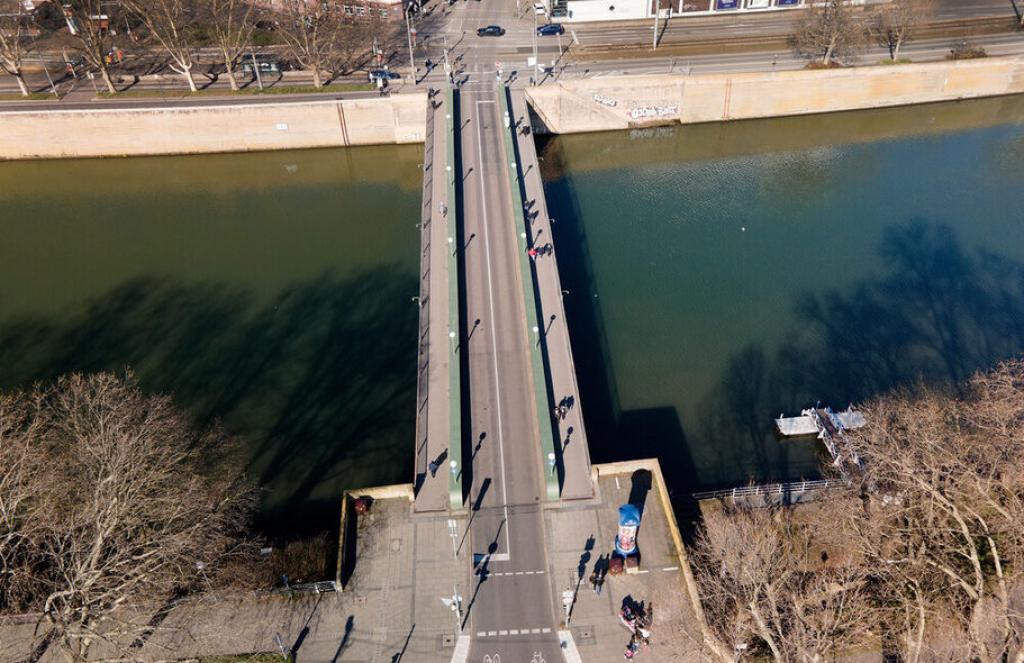Thessaloniki gets ready for its metro launch in November
The underground rapid transit lines have been under construction for almost two decades due to various project delays
 TheMayor.EU logo
TheMayor.EU logo 
The Wilhelmsbrücke, the main point connecting Stuttgart with the town of Cannstatt, Source: City of Stuttgart
Car traffic is supposed to flow into the Rosenstein tunnel, a controversial project that has divided opinion in the city for years
Today, authorities in Stuttgart announced they will bar cars from the King Wilhelm Bridge (Wilhelmsbrücke) near the centre of the city. The decision will come into force for a trial period on 28 March, due to the newly constructed Rosenstein car tunnel. The tunnel, on the other hand, is set to be opened on the 26 March.
The bridge itself will be closed for a brief period as traffic authorities need to lay down the proper markings. Moreover, it will be reserved for cyclists for one year as a traffic test. If authorities deem the test successful, they will make the changes permanent.
The first iteration of the Wilhelmsbrücke was built in 1839 out of stone, however, almost 100 years later it was demolished due to new regulations. The new structure was unveiled in 1929 - this time made out of steel. Shortly after, the bridge was blown up at the end of World War II, but it was later restored using original parts.
According to a statement by the city, the decision to close the bridge for cars has been a topic of debate since the 2000s, when the expansion of the Rosenstein Tunnel was first planned. The authorities finally agreed on the measure in 2018.
The tunnel, in its own right, is over one kilometre long and cost authorities 193 million euros to build. It is also known as the B10 tunnel, as it will carry cars in a two-way tunnel under the Rosenstein Park and onto the B10 highway.
However, it is also part of the iconic local infrastructure, with the first Rosenstein tunnel opening in 1846. Back then, the idea was to connect the Rosenstein Castle, with the nearby town of Cannstatt.
Authorities opted for the tunnel because the route offered good positioning options for the train station in Cannstatt. Furthermore, if they were to build above ground, the rails would have disrupted the castle gardens.
The tunnel was, however, decommissioned in 1916, yet this sent Stuttgart down on a very particular tunnel building road. In 1915, they started building a twin tunnel that was shorter, but wider and a little further to the east. It remains in service to this day since first opened in 1925.
Currently, alongside the road tunnel, authorities are also building a new rail tunnel, to replace the older one. This project is called Stuttgart 21 and it has been a sore topic in local politics for the past ten years.
The controversy surrounding the project even prompted authorities to launch a referendum in 2011, asking citizens whether the city should pull out of the project. Interestingly, the majority voted in favour of the project.
Some analysts even credit the tunnel as a reason why the local Greens rose to power in 2009, citing disgruntlement with the tunnel project. Suffice to say, the issue has continued to play a key role in local politics ever since, as the tunnel is not complete yet.

The underground rapid transit lines have been under construction for almost two decades due to various project delays

Now you can get your wine in Talence by paying directly in Bitcoin

That’s because the state has to spend money on updating the railway infrastructure rather than subsidizing the cost of the popular pass

Rethinking renewable energy sources for the urban landscape

The examples, compiled by Beyond Fossil Fuels, can inform and inspire communities and entrepreneurs that still feel trepidation at the prospect of energy transition

Now you can get your wine in Talence by paying directly in Bitcoin

The 10th European Conference on Sustainable Cities and Towns (ESCT) sets the stage for stronger cooperation between the EU, national and local level to fast track Europe's transition to climate neutrality.

At least, that’s the promise made by the mayor of Paris, Anne Hidalgo

The underground rapid transit lines have been under construction for almost two decades due to various project delays

At least, that’s the promise made by the mayor of Paris, Anne Hidalgo

Hostal de Pinós is located in the geographical centre of the autonomous region

Despite its church-y name, the district has long been known as the hangout spot for the artsy crowds

Urban dwellers across the EU are having a say in making their surroundings friendlier to people and the environment.

Forests in the EU can help green the European construction industry and bolster a continent-wide push for architectural improvements.

Apply by 10 November and do your part for the transformation of European public spaces

An interview with the Mayor of a Polish city that seeks to reinvent itself

An interview with the newly elected ICLEI President and Mayor of Malmö

A conversation with the Mayor of Lisbon about the spirit and dimensions of innovation present in the Portuguese capital














